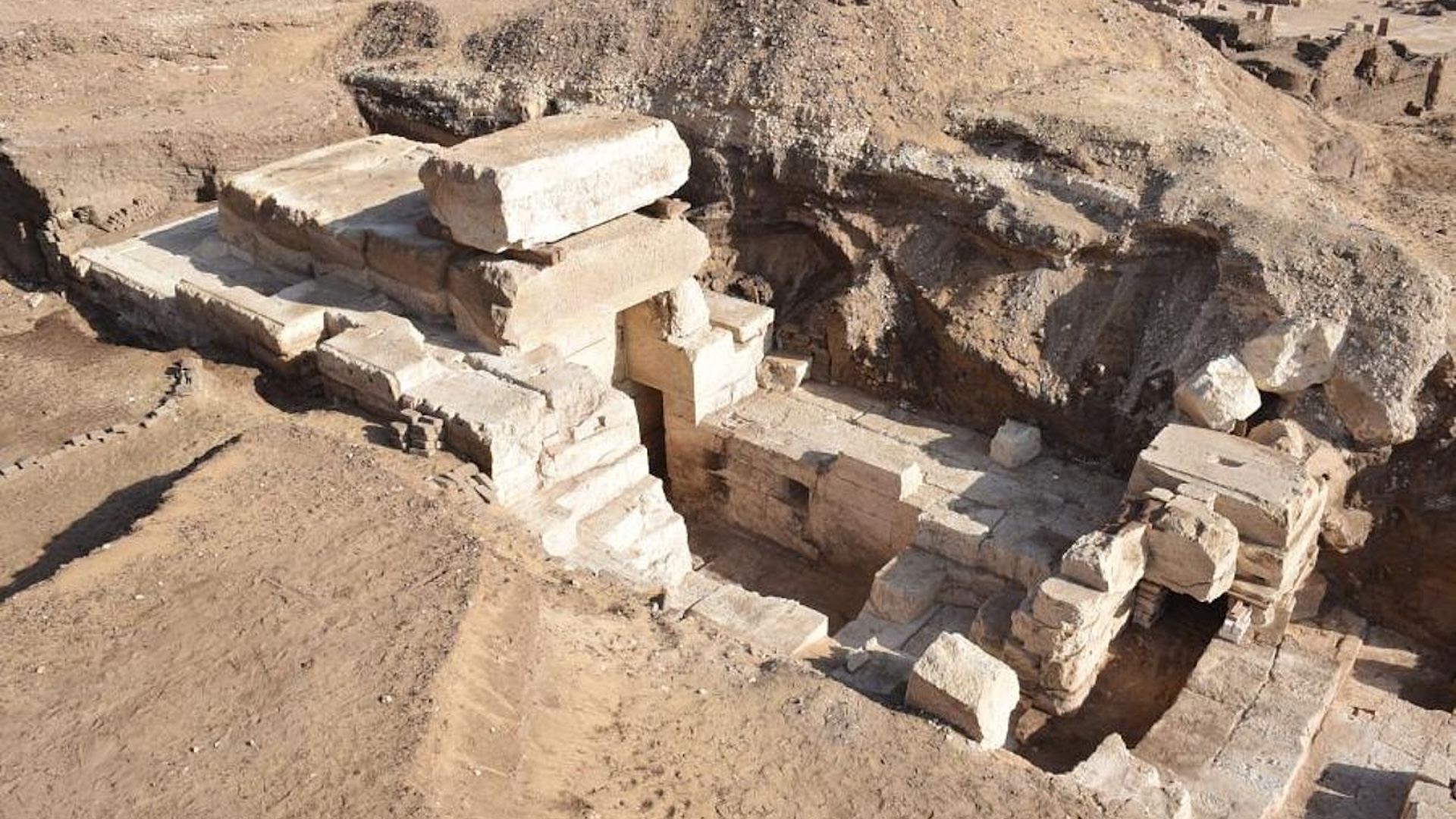2,100-year-old temple from ancient Egypt discovered hidden in cliff face
The temple is located close to Luxor and was possibly dedicated to the lion-headed goddess Repit.

Archaeologists have unearthed an ancient Egyptian temple hidden in a cliff face. The temple dates to around 2,100 years ago and was discovered at the site of Athribis, located about 125 miles (200 kilometers) north of Luxor.
While excavating the temple, which is made of stone, the team found the remains of reliefs showing King Ptolemy VIII (reign circa 170 to 116 B.C.) offering sacrifices to the lion-headed goddess Repit and her son Kolanthes, the team said in a statement.
Repit was the consort of Min-Ra, a god associated with fertility. The temple may have been specifically dedicated to Repit, but "the name of this building is still not known," project leader Christian Leitz, an Egyptology professor at the University of Tübingen in Germany, told Live Science in an email. The team hopes to learn more as excavations and analysis continues, Leitz added.
The team also uncovered a chamber that once held temple utensils and, later, amphorae, or clay vessels with two handles and narrow necks. At the entrance to the chamber, the team found reliefs depicting Repit and Min-Ra, with one of the reliefs showing Min-Ra accompanied by two decans — stars that enable people to tell the time at night. The decans have humanoid bodies with animal heads — in this case, one has the head of a falcon and the other the head of an ibis. Leitz said that other temples portray decans near gods, although usually there are more than two decans accompanying them.



Related: Ancient Zodiac paintings on Egyptian temple see the light of day after 2,200 years
Athribis is located near the modern-day city of Sohag. The team started uncovering the temple in 2022 and the site is part of a larger temple district that archaeologists have been excavating since 2012.
Live Science contacted scholars not involved in the research to get their thoughts. Sarah Symons and Juan Antonio Belmonte, who are archaeoastronomers that have done extensive work in Egypt, both said that the discovery is interesting but that more information on the temple and decans is needed.
Get the world’s most fascinating discoveries delivered straight to your inbox.

Owen Jarus is a regular contributor to Live Science who writes about archaeology and humans' past. He has also written for The Independent (UK), The Canadian Press (CP) and The Associated Press (AP), among others. Owen has a bachelor of arts degree from the University of Toronto and a journalism degree from Ryerson University.
